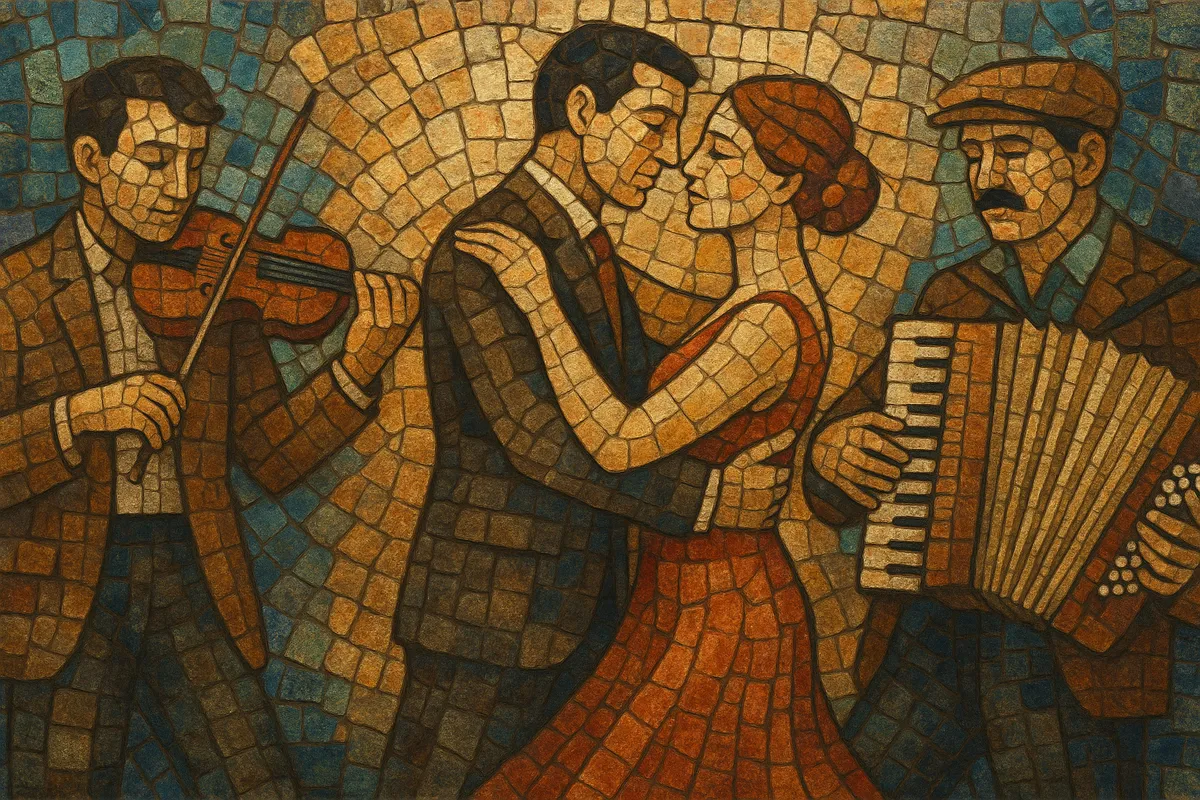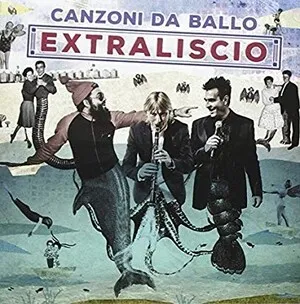Liscio is a traditional Italian ballroom dance music style that crystallized in Emilia–Romagna, especially in Romagna, in the mid-20th century. The term "liscio" ("smooth") refers to the fluid, gliding quality of partner dancing associated with the genre.
Its core repertoire is built on European social-dance forms—waltz (valzer), polka, and mazurka—interpreted with a distinctly Romagnolo flavor. Typical ensembles feature violin and clarinet (or saxophone) supported by accordion, guitar, double bass or bass guitar, and drums, often with a lead singer performing in Italian or the local Romagnolo dialect.
Liscio is made for community dancing in balere (dance halls), village fêtes (sagre), and social gatherings. Melodies are tuneful and memorable, harmonies are mostly diatonic and functional, and arrangements emphasize a steady, danceable pulse with a warm, festive atmosphere.
In the late 19th and early 20th centuries, European social dances such as the waltz, polka, and mazurka spread across Italy. In Romagna, local violin bands and clarinet-led ensembles embraced these forms, blending them with regional folk sensibilities. Figures like Carlo Brighi ("Zaclén") helped codify a local approach that would later feed directly into the liscio tradition.
Secondo Casadei became the pivotal architect of modern liscio. Active from the 1930s, he developed a repertoire and ensemble sound that defined the genre’s identity. His 1954 composition "Romagna mia"—recorded shortly after—became an unofficial anthem of the region and a touchstone of liscio’s melodic, singable character.
Under the leadership of Raoul Casadei (Secondo’s nephew), Orchestra Casadei transformed liscio into a national phenomenon, touring widely and filling dance halls. This era saw the rise of numerous "orchestre spettacolo" (show orchestras), increased amplification, and the incorporation of saxophones and drum kits, all while keeping the smooth, partner-dance focus.
As Italian pop and disco grew, liscio maintained a strong regional base through festivals, ballroom circuits, and televised variety shows. Ensembles like Castellina-Pasi and Orchestra Borghesi sustained a robust live tradition, while new repertoire and modernized arrangements kept the dance floors lively.
Recent decades have brought renewed interest and creative crossovers. Extraliscio, for example, blends liscio instrumentation and dance forms with indie/rock attitudes, bringing the style to new audiences (including at the Sanremo Festival). Cultural events such as "La Notte del Liscio" celebrate the genre’s heritage and its living, dance-centered community.








